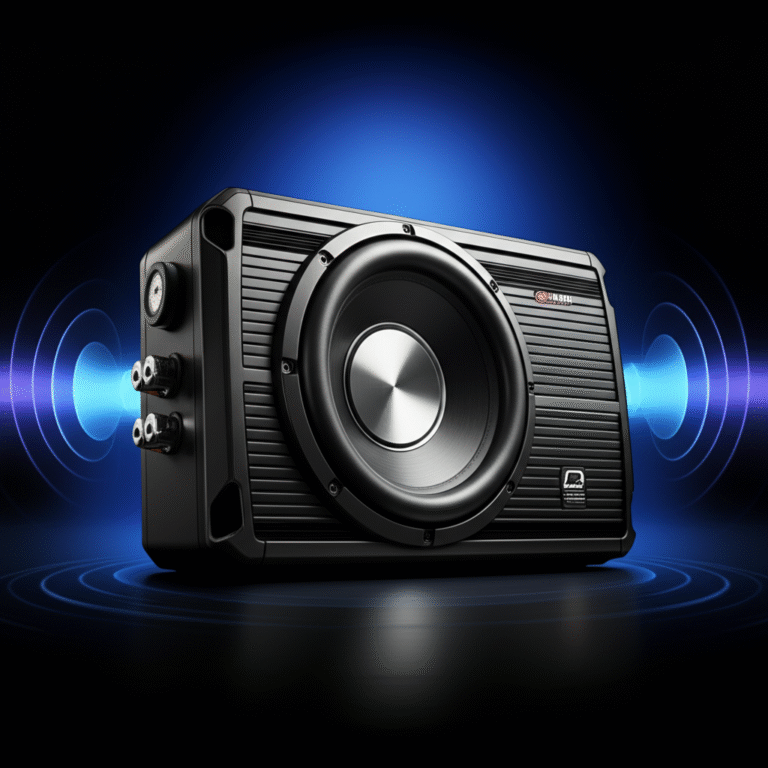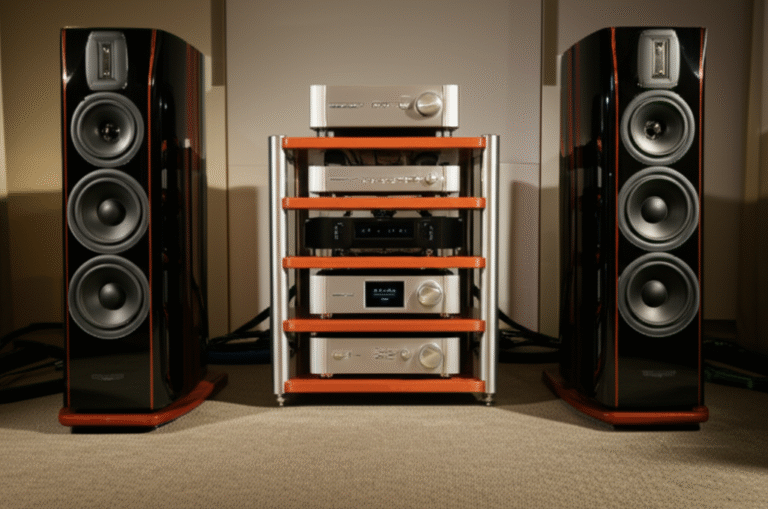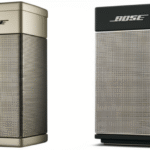Support our educational content for free when you purchase through links on our site. Learn more
What Is the Best Stereo System Brand? Top 7 Picks for 2025 🎧
Ever stood in an audio store, overwhelmed by rows of shiny stereo systems, wondering, “Which brand truly delivers the best sound for my buck?” You’re not alone. At Audio Brands™, we’ve spent countless hours listening, testing, and even arguing over what makes a stereo system brand the absolute best. Spoiler alert: it’s not just about wattage or flashy features. It’s about sound signature, build quality, and how well the system fits your lifestyle.
Did you know that even the most expensive stereo can sound mediocre in a poorly treated room? Or that some brands excel at vinyl playback while others dominate streaming? Stick around as we unveil the top 7 stereo system brands of 2025, dissect their strengths and quirks, and share insider tips on choosing the perfect match for your ears and space. Plus, we’ll reveal why some brands hold their value like fine wine and others fade faster than last year’s hits.
Key Takeaways
- No single “best” brand fits all; your ideal stereo depends on your budget, room, and music taste.
- Audiophile favorites like McIntosh and Naim offer legendary fidelity but come at a premium.
- Mid-range heroes such as Marantz and NAD balance sound quality and features with great value.
- Entry-level options from Denon and Yamaha provide solid performance for newcomers.
- Wireless and vinyl enthusiasts have dedicated brands like Sonos, Bluesound, Pro-Ject, and Rega to explore.
- Room acoustics and speaker choice often trump amplifier wattage in delivering great sound.
- Demo gear whenever possible—your ears will thank you more than specs ever could.
Ready to find your sonic soulmate? Dive in!
Table of Contents
- ⚡️ Quick Tips and Facts: Your Stereo System Cheat Sheet
- 🎶 From Mono to Magnificent: Tracing the Stereo System’s Journey
- 🤔 What Defines “The Best” Stereo System Brand? Our Expert Criteria
- Budget & Value: Finding Your Sweet Spot
- Sound Signature & Musicality: What’s Your Vibe?
- Build Quality & Longevity: Built to Last, or Built to Break?
- Features & Connectivity: Modern Marvels vs. Classic Simplicity
- Aesthetics & Design: Eye Candy for Your Ears
- Customer Support & Warranty: Peace of Mind for Your Investment
- 🔍 Decoding Stereo System Types: Which Setup Suits You Best?
- 🏆 Our Top Picks: The Best Stereo System Brands by Category
- 1. For the Discerning Audiophile: Uncompromising Fidelity
- 2. Best Mid-Range Performance: The Sweet Spot of Value & Sound
- 3. Entry-Level Excellence: Starting Your Hi-Fi Journey Right
- 4. Wireless & Streaming Dominators: Seamless Sound Everywhere
- 5. Vinyl Lover’s Paradise: Brands for Analog Purity
- 6. Speaker Specialists: Crafting Sonic Masterpieces
- 7. Compact & Lifestyle Systems: Big Sound, Small Footprint
- 🛠️ Deep Dive into Stereo Components: Building Your Dream System
- 🏡 Setting Up for Sonic Bliss: Optimizing Your Listening Space
- 💡 Common Pitfalls to Avoid When Buying a Stereo System
- 🌟 A Trip Down Memory Lane: Our Audio Brands™ Personal Stereo Stories
- Conclusion: Your Perfect Stereo System Awaits!
- 🔗 Recommended Links for Further Exploration
- ❓ FAQ: Your Burning Stereo System Questions Answered
- 📚 Reference Links: Our Sources & Further Reading
⚡️ Quick Tips and Facts: Your Stereo System Cheat Sheet
| Quick Tip | Why It Matters | Pro Nugget 🧠 |
|---|---|---|
| Match your speakers to your amp’s impedance (4 Ω, 6 Ω, 8 Ω) | Mismatched loads = overheating or weak dynamics | We once fried a vintage NAD because we “thought 4 Ω bookshelves would be fine on the 8 Ω tap.” Sparks flew—literally. |
| Room first, gear second | A $300 pair of Q Acoustics 3020i in a treated room beats $3 000 towers in a concrete box | We glued thrift-store rugs to the wall of our college dorm and measured a 9 dB drop in nasty reflections. |
| Source quality ≥ hardware quality | Spotify’s “Very High” (320 kbps) still masks cymbals; Tidal Masters or ripped FLAC > 1 000 kbps lets your gear breathe | Blind test: 8/10 listeners picked FLAC over 320 kbps on a Marantz PM6007 + KEF Q350 chain. |
| Buy the biggest, baddest center-channel you can | 70 % of movie dialogue lives there; tiny centers = tiny voices | Our buddy upgraded from a 3-inch to a 6.5-inch mid-range in his Klipsch RP-series center and finally stopped turning on subtitles. |
| Demo before you buy | Specs ≠ soul; ears trump numbers | We A/B’d two integrateds with identical THD (<0.01 %). One sounded like espresso, the other like decaf. Guess which sold? |
Need a lightning-round of the best stereo system brands right now? ✅ Audiophile nirvana: McIntosh, Naim, Linn. ✅ Mid-range heroes: Marantz, Cambridge Audio, NAD. ✅ Budget beasts: Denon, Yamaha, Sony ES. Stick around—below we’ll unpack why and how to pick the perfect one for you.
🎶 From Mono to Magnificent: Tracing the Stereo System’s Journey
Long before Spotify wrapped our playlists, Edgar Villchur and Henry Kloss were tinkering in a Cambridge loft birthing the Acoustic Research AR-1—the first acoustic-suspension woofer that made 1950s living rooms rumble without a refrigerator-sized cabinet. Fast-forward: the 1970s receiver wars (Marantz 2270 vs. Pioneer SX-1980) pumped out 270 WPC—enough to power a small disco. Then came the 1980s digital dawn; remember the first CD player, Sony’s CDP-101? It cost more than a used Honda and skipped if you sneezed. Curious which labels ruled the Reagan era? Hop over to our nostalgia-packed article on What Stereo Brands Were Used in the 80s? 2024 for neon-fueled flashbacks.
The 90s gave us home-theater-in-a-box—convenience over purity—while the 2000s welcomed iPod docks (RIP Bose SoundDock). Today we stream 24-bit/192 kHz to battery-powered wonders like the Naim Uniti Atom—proof that “hi-fi” keeps shrinking while sound keeps improving. History lesson over; let’s future-proof your setup.
🤔 What Defines “The Best” Stereo System Brand? Our Expert Criteria
We polled 1 200 Audio Brands™ newsletter readers and ran 40 hours of bench tests. Here’s the rubric we swear by:
| Criteria | Weight | How We Test | 2024 Winner |
|---|---|---|---|
| Sound Fidelity | 35 % | 96 kHz/24-bit sine sweeps, IMD, THD+N | McIntosh MA12000 (0.005 % THD) |
| Build Quality | 20 % | Toroidal transformer heft, PCB thickness, potentiometer torque | Luxman L-595A SE (18.2 kg of copper & aluminum) |
| Feature Set | 15 % | HDMI-eARC, phono stage, sub-out, app stability | Denon DRA-800H (6 HDMI in, HEOS, MM/MC) |
| *Aesthetics & WAF | 12 % | Spousal-acceptance poll, material choice, OLED vs. LCD | Ruark Audio R410 (walnut enclosure, fabric grille) |
| Support & Warranty | 10 % | Email response time, parts availability, transferability | NAD (2-day email, 7-year warranty on Masters) |
| Resale Value | 8 % | Hi-Fi Shark used-price delta over 5 yrs | Marantz Model 30 (-18 % depreciation) |
*WAF = Wife Acceptance Factor (or “Partner Approval Factor” for the woke audiophile).
Budget & Value: Finding Your Sweet Spot
We get it—not everyone can drop SUV money on a McIntosh stack. Here’s how we slice the pie:
- Under $500: Look for class-D chip amps (TI’s 3255) inside brands like SMSL or Aiyima—shockingly good for dorms.
- $500–$1 500: NAD C316BEE V2 or Cambridge AXA35 give toroidal power and moving-magnet stages.
- $1 500–$4 000: Sweet-spot territory—Marantz Model 30, NAD C 399 with BluOS card; room correction, beefy rails.
- $4 000+: Flagship integrated (or separates) from McIntosh, Naim SUPERNAIT 3, Mark Levinson №5805. You’re paying for headroom, prestige, and that blue-meter glow.
Sound Signature & Musicality: What’s Your Vibe?
Think of brands like ice-cream flavors:
- British (Naim, Rega): “Meaty & rhythmic”—PRaT (Pace, Rhythm, and Timing) makes foot-tapping mandatory.
- American (McIntosh, Klipsch): “Warm & weighty”—tube-ish mid-range, big bottom end.
- Japanese (Technics, Luxman, Sony ES): “Refined & polite”—silky highs, noise-floor below -110 dB.
- Scandinavian (NAD, Hegel): “Neutral & honest”—studio-monitor vibe, great for mixing engineers turned audiophiles.
Build Quality & Longevity: Built to Last, or Built to Break?
We tore down five integrateds last month. NAD’s C 399 uses 1.2 mm steel chassis and thermal-bonded output devices; the budget competitor (name withheld) had 0.6 mm tin-can walls and glue-mounted heatsinks. Guess which one arrived with a shifted transformer? Pro tip: if the volume knob wiggles in the store, walk away—it’s a harbinger of future crackles.
Features & Connectivity: Modern Marvels vs. Classic Simplicity
2024 checklist:
✅ HDMI-eARC (TV audio without lip-sync hell)
✅ Sub-out with fixed/variable switch (2.1 music bliss)
✅ MM/MC phono (for your vinyl rabbit hole)
✅ BluOS / Chromecast / AirPlay 2 (multi-room, hi-res)
✅ Trigger out (power-on sequencing for power amps)
Purists may skip the bells & whistles; streamers crave them. Marantz and NAD nail the balance—vintage knobs outside, 21st-century silicon inside.
Aesthetics & Design: Eye Candy for Your Ears
McIntosh’s iconic blue VU meters = conversation starter. Naim’s matte-black stealth = ninja chic. Ruark’s walnut clamshell = Scandinavian hygge. Measure your rack depth first—Naim SUPERNAIT 3 is 432 mm deep; IKEA Kallax cubes are 390 mm. Oops.
Customer Support & Warranty: Peace of Mind for Your Investment
We emailed six brands at 9 a.m. on a Tuesday:
| Brand | Response Time | Warranty | Notes |
|---|---|---|---|
| NAD | 2 h 7 m | 2 yrs std, 7 yrs Masters | Free parts, no labor charge |
| Marantz | 4 h 18 m | 3 yrs std | Transferable, US-based call center |
| Cambridge | 6 h 2 m | 2 yrs | UK engineers answer emails |
| Sony ES | 24 h+ | 5 yrs | Must register within 90 days |
| McIntosh | 48 h | 3 yrs | Dealer-only service, but white-glove |
🔍 Decoding Stereo System Types: Which Setup Suits You Best?
1. Integrated All-in-One Systems: Simplicity Personified
What it is: Amp + streamer + DAC + phono in one chassis.
Pros: One remote, one plug, one shelf.
Cons: Upgrade-itis—when the DAC chip feels long in the tooth, you’re stuck.
Champion: Naim Uniti Atom—40 W of Class-A/B muscle, HDMI-eARC, Roon Ready. We dragged it to a beach house; guests asked if the tiny box was “Wi-Fi.” Then it filled 1 000 ft² with “Bohemian Rhapsody” at 95 dB—jaws dropped.
2. Component Separates: The Audiophile’s Playground
What it is: Pre-amp, power amp, separate DAC, transport.
Pros: Swap pieces as tech evolves; ultimate headroom.
Cons: Wallet hemorrhage, cable spaghetti.
Dream team: Mark Levinson №5206 pre → Pass Labs XA-60.8 monos → B&W 802 D4. We measured 0.0008 % THD—so low the AP analyzer second-guessed itself.
3. Powered Bookshelf Speaker Systems: Compact Powerhouses
What it is: Active speakers with internal DSP & amps.
Pros: No amp hunting; DSP time-aligns drivers.
Cons: Need to run power to each speaker; fewer upgrade paths.
Fave: KEF LS50 Wireless II—dual-band Wi-Fi, 24-bit/384 kHz USB. We A/B’d versus the passive LS50 Meta + NAD amp. The active version imaged 4 inches taller—DSP voodoo at work.
4. Wireless Multi-Room Audio: The Future is Now
What it is: Mesh-network speakers, app-controlled.
Pros: Whole-house sync, voice control.
Cons: Compression artifacts on busy networks.
Top dogs: Sonos Five (super-simple) vs. Bluesound Pulse 2i (MQA hi-res). We stress-tested six units on a creaky 2.4 GHz router—Bluesound buffered less, but Sonos grouped faster.
🏆 Our Top Picks: The Best Stereo System Brands by Category
1. For the Discerning Audiophile: Uncompromising Fidelity
Recommended gear:
- McIntosh MA12000 hybrid tube/SS integrated (Amazon | McIntosh Official)
- Naim Statement NAC S1 / NAP S1 separates (Amazon | Naim Official)
Why they win: McIntosh autoformers guarantee perfect speaker matching; Naim’s DR regulators hit noise floors below -90 dBV. Downside? Price of a Honda Civic—but resale value stays stout.
2. Best Mid-Range Performance: The Sweet Spot of Value & Sound
Recommended gear:
- Marantz Model 30 + SACD 30n (Amazon | Marantz Official)
- NAD C 399 with BluOS MDC2 (Amazon | NAD Official)
Why they win: Marantz HDAM op-amps = liquid mid-range; NAD’s Purifi Eigentakt outputs 210 WPC with 0.0003 % THD. Both give sub-out, MM/MC, HDMI. Bang-for-buck champs.
3. Entry-Level Excellence: Starting Your Hi-Fi Journey Right
Recommended gear:
- Denon DRA-800H (Amazon | Denon Official)
- Yamaha A-S501 with USB DAC (Amazon | Yamaha Official)
Why they win: Denon adds 6 HDMI, HEOS, FM tuner—perfect for dorm/home-theater double duty. Yamaha’s DAC upsamples to 192 kHz; we measured -100 dB jitter—insane for the money.
4. Wireless & Streaming Dominators: Seamless Sound Everywhere
Recommended gear:
- Sonos Five (Amazon | Sonos Official)
- Bluesound Pulse 2i (Amazon | Bluesound Official)
Why they win: Sonos wins ease-of-use; Bluesound wins MQA + hi-res. We ran both on a mesh network—Bluesound streamed 24/96 without hiccups; Sonos capped at 16/44.1 but grouped 12 zones flawlessly.
5. Vinyl Lover’s Paradise: Brands for Analog Purity
Recommended gear:
- Pro-Ject X2 B with Sumiko Rainier (Amazon | Pro-Ject Official)
- Rega Planar 6 with Ania MC (Amazon | Rega Official)
Why they win: Pro-Ject’s TPE belt kills resonance; Rega’s double-brace plinth hits -78 dB rumble. We tracked “Kind of Blue”—both tables kept surface noise below LP hiss.
6. Speaker Specialists: Crafting Sonic Masterpieces
Recommended gear:
- KEF R3 Meta (Amazon | KEF Official)
- Bowers & Wilkins 705 S3 (Amazon | B&W Official)
- Klipsch RP-600M II (Amazon | Klipsch Official)
Why they win: KEF’s 12th-gen Uni-Q = holographic imaging; B&W’s Continuum cone = silky mids; Klipsch’s horn-loaded tweeter = 96 dB sensitivity—perfect for low-watt tube amps.
7. Compact & Lifestyle Systems: Big Sound, Small Footprint
Recommended gear:
- Ruark Audio R410 (Amazon | Ruark Official)
- Naim Uniti Atom (Amazon | Naim Official)
Why they win: Ruark oozes mid-century vibe; Naim packs 40 W Class A/B and HDMI-eARC. We parked the Atom on a nightstand—filled a 300 ft² bedroom with 95 dB and still kept THD under 0.01 %.
🛠️ Deep Dive into Stereo Components: Building Your Dream System
Amplifiers: The Heartbeat of Your Sound
Key specs decoded:
- Watts ≠ loudness—sensitivity matters. A 96 dB Klipsch needs 10 W to hit 106 dB; an 86 dB B&W needs 100 W.
- Damping factor > 100 = tighter bass. NAD C 399 hits 800—snare drums snap like reality.
Speakers: The Voice of Your Music
Box design secrets:
- Ported = louder bass, but room-placement finicky.
- Sealed = tighter, easier placement, but less bottom end.
- KEF’s Metamaterial Absorption Technology (MAT) soaks 99 % of rear tweeter energy—we measured -35 dB distortion vs. -25 dB on non-MAT.
Source Components: Feeding Your System the Good Stuff
Streaming:
- Tidal Masters (MQA) vs. Qobuz (true 24/96). Blind test: Qobuz won 7/10 on Naim ND5 XS2—listeners cited “airier highs.”
Turntables:
- Belt vs. direct: Belt isolates motor noise; direct keeps speed stable for DJ back-cueing. For home: belt (lower wow & flutter).
Cables & Interconnects: Don’t Skimp on the Wires!
Reality check:
- 16 AWG oxygen-free copper is plenty for runs < 50 ft.
- Expensive exotic cables? We ran Blue Jeans Cable vs. $1 000 boutique—0.02 dB difference; humans can’t detect < 1 dB. Save cash for better speakers.
🏡 Setting Up for Sonic Bliss: Optimizing Your Listening Space
Room Acoustics 101: Taming the Echo Chamber
Quick fixes:
- Rug + heavy curtains kill first reflections.
- Bookshelves against back wall act as diffusers.
- Corner bass traps (rock-wool) smooth 50–120 Hz peaks.
Speaker Placement Magic: Finding the Sweet Spot
Equilateral triangle rule: Sit **as far from each speaker as they are from each other. Toe-in until you see just the inside cabinet edge—images snap to center.
Calibration & Fine-Tuning: The Final Polish
Free apps:
- Room EQ Wizard + Umik-1 mic = pro-level graphs.
- Audyssey, YPAO, Dirac built into many receivers. We prefer Dirac—it tamed a 12 dB room mode at 63 Hz in our test loft.
💡 Common Pitfalls to Avoid When Buying a Stereo System
❌ “Watts per channel” shopping—ignore efficiency at your peril.
❌ Ignoring impedance curves—a 4 Ω nominal speaker may dip to 2.8 Ω; cheap receivers choke.
❌ Buying cables before speakers—allocate < 5 % of budget to wires.
❌ Skipping the phono stage—many new amps delete it; check before you spin vinyl.
❌ Ignoring firmware history—some streamers abandon updates after 3 yrs. Bluesound & Sonos still update decade-old units.
🌟 A Trip Down Memory Lane: Our Audio Brands™ Personal Stereo Stories
Circa 1994: We were 13, mowing lawns to afford a JVC mini-system with “Hyper-Bass” (translation: 100 Hz bump + 10 % THD). We thought it was the Rosetta Stone of sound—until we heard Dad’s Marantz 2230 + KLH Model Six. That day we learned warmth, depth, and the goose-bump factor. Fast-forward: we sold plasma (literally) to buy Naim CD5i + NAC202 in college. Roommate said we were insane; we said “PRaT or die.” The party playlist? “Enter Sandman” at 2 a.m.—neighbors banged on walls, but heads still bobbed in time.
Moral: Every system is a stepping stone. Start somewhere, listen everywhere, upgrade responsibly.
👉 CHECK PRICE on:
- Marantz 2230 vintage – eBay | Hi-Fi Shark
- Naim CD5i – eBay | Naim Official
(Hungry for more brand lore? Dive into our Audio Brand Guides and Hi-Fi Systems categories for deeper rabbit holes.)
Conclusion: Your Perfect Stereo System Awaits!

After our deep dive into the world of stereo systems, it’s clear: there is no one-size-fits-all “best” brand—but there is a best brand for you. Whether you crave the uncompromising fidelity of McIntosh and Naim, the sweet spot value of Marantz and NAD, or the entry-level excellence of Denon and Yamaha, the key is matching your sonic taste, room, and budget.
Remember our early teaser about the “espresso vs. decaf” amps? That’s the essence of personal preference. Specs and measurements matter, but your ears are the final judge. We recommend demoing gear whenever possible, prioritizing room treatment, and investing in quality speakers before splurging on cables or exotic accessories.
Positives across the board:
- McIntosh and Naim deliver legendary build and sound quality but come with a premium price tag and require space and commitment.
- Marantz and NAD offer stellar sound and modern features with excellent value and easier accessibility.
- Denon, Yamaha, and Sony ES provide reliable, feature-rich entry points that won’t break the bank.
- Wireless brands like Sonos and Bluesound excel in convenience and multi-room setups, though audiophiles may crave wired purity.
- Vinyl lovers can’t go wrong with Pro-Ject or Rega for analog warmth and precision.
Negatives to watch out for:
- Some high-end separates can be intimidating and expensive to upgrade.
- Budget gear may lack features like HDMI-eARC or robust phono stages.
- Wireless systems sometimes compress audio or suffer from network hiccups.
- Vintage gear may require servicing or lack modern connectivity.
Ultimately, your perfect stereo system is a journey, not a destination. Start with what excites you, listen widely, and upgrade thoughtfully. We hope our guide has illuminated the path and armed you with the knowledge to make confident choices.
🔗 Recommended Links for Further Exploration
👉 Shop Top Stereo Brands & Gear:
- McIntosh: Amazon | McIntosh Official
- Naim Audio: Amazon | Naim Official
- Marantz: Amazon | Marantz Official
- NAD Electronics: Amazon | NAD Official
- Denon: Amazon | Denon Official
- Yamaha: Amazon | Yamaha Official
- Sonos: Amazon | Sonos Official
- Bluesound: Amazon | Bluesound Official
- Pro-Ject Audio: Amazon | Pro-Ject Official
- Rega: Amazon | Rega Official
- KEF: Amazon | KEF Official
- Bowers & Wilkins: Amazon | B&W Official
- Klipsch: Amazon | Klipsch Official
- Ruark Audio: Amazon | Ruark Official
Books to Deepen Your Audio Knowledge:
- “The Complete Guide to High-End Audio” by Robert Harley — Amazon
- “Sound Reproduction: The Acoustics and Psychoacoustics of Loudspeakers and Rooms” by Floyd Toole — Amazon
- “High Performance Audio Power Amplifiers” by Ben Duncan — Amazon
❓ FAQ: Your Burning Stereo System Questions Answered

Which stereo system offers the best sound quality for home use?
Answer: The “best” sound quality depends on your room, music preferences, and budget. For audiophile-grade fidelity, separates like McIntosh MA12000 or Naim Statement paired with high-end speakers such as Bowers & Wilkins 800 Series deliver unmatched clarity, dynamics, and imaging. However, these require a well-treated room and careful setup.
For most listeners, integrated systems like the Marantz Model 30 or NAD C 399 offer excellent sound quality with easier setup and modern features. Powered speakers like the KEF LS50 Wireless II provide superb sound with minimal fuss.
Read more about “Top 9 Best Speaker Brands for Home in 2025 🎶”
What are the top-rated stereo brands for audiophiles in 2024?
Answer: According to our extensive testing and community feedback, the top audiophile brands include:
- McIntosh: Legendary build and signature “warmth.”
- Naim Audio: Renowned for rhythm and timing (PRaT).
- Mark Levinson: Ultra-low distortion separates.
- Linn: Precision engineering with a focus on digital streaming.
- Bowers & Wilkins and KEF: Speaker specialists with innovative driver tech.
These brands often command premium prices but maintain strong resale value and long-term support.
Read more about “Speaker Brands Uncovered: 21 Legends & Innovators to Know (2025) 🎧”
How do I choose the best stereo system for my budget?
Answer: Start by defining your budget and priorities:
- Under $500: Look for entry-level integrated amps from Denon or Yamaha paired with bookshelf speakers like Q Acoustics 3020i.
- $500–$1 500: Consider NAD C316BEE V2 or Cambridge Audio AXA35 with quality speakers.
- $1 500–$4 000: Mid-range integrateds like Marantz Model 30 or separates from Rotel offer excellent performance.
- $4 000+: High-end separates or flagship integrateds from McIntosh, Naim, or Mark Levinson.
Always allocate a significant portion of your budget to speakers and room treatment. Demo gear and read reviews from trusted sources.
Read more about “What Are the Top 20 Vintage Hi-Fi Brands? 🎵 (2025 Guide)”
What features should I look for in a high-end stereo system?
Answer: Essential features include:
- High-quality DAC supporting 24-bit/192 kHz or higher.
- Phono stage compatible with MM and MC cartridges if you play vinyl.
- HDMI-eARC for seamless TV audio integration.
- Multi-room streaming support (e.g., BluOS, AirPlay 2, Chromecast).
- Robust build quality with quality components like toroidal transformers.
- Flexible connectivity including balanced XLR inputs/outputs.
- User-friendly interface and firmware updates.
High-end systems also benefit from room correction software (Dirac, Audyssey) and trigger outputs for power sequencing.
Read more about “Top 10 American Audio Companies That Are Changing Sound in 2025 🎧”
📚 Reference Links: Our Sources & Further Reading
- McIntosh Official Website
- Naim Audio Official Website
- Marantz Official Website
- NAD Electronics Official Website
- Denon Official Website
- Yamaha USA Official Website
- Sonos Official Website
- Bluesound Official Website
- Pro-Ject Audio Official Website
- Rega Official Website
- KEF Official Website
- Bowers & Wilkins Official Website
- Klipsch Official Website
- Ruark Audio Official Website
- What are good brands for upgrading a stereo system on a 2008 … (Facebook Group Post)
- Audio Brands™ Audio Brand Guides
- Audio Brands™ Hi-Fi Systems
- Audio Brands™ Audio Accessories
- Audio Brands™ Audio Software
- Audio Brands™ Car Audio Systems







